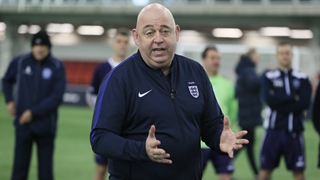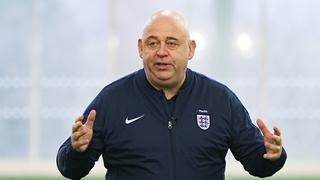
I’ve been coaching football in England for over 35 years, and over that time I’ve seen some significant changes to the way the game is played and coached.
Football has always moved with the times and, in my view, has become all the better for it. Across the game, both on and off the pitch, football is vastly different from how I remember it 35 years ago.
You only have to look at the vast numbers of people playing and watching football to see how far we've come. Not to mention the improvements in technical coaching, sport technology, player welfare, facilities, stadia, etc.
When the FIELD study was published in October 2019, it felt like an important milestone for our game. The FA played a crucial role in supporting the study, having joint-funded the research alongside the PFA, and since it was published we’ve not stopped thinking about exactly what the research tells us and what the best steps are to take to support the game, from grassroots level to the top.
Naturally there were calls for heading to be banned, following the publication of the study. This was entirely understandable. Heading the ball is a unique aspect of the way football is played, so this needed to be given much deliberation and consideration, notably with the support of our independently-chaired FA Research Taskforce.
However, we do need to be mindful that the FIELD study did not show that heading the ball was the cause to the link with incidence of degenerative neurocognitive disease in their sample group of ex-professional footballers who were born between 1900 and 1976. And, as a result, there was no evidence to suggest that heading the ball, at any level of the game, should be banned.
Our analysis of heading the ball in children’s games also gives us excellent insight into whether heading is a big part of the game at that level or not. The research shows that on average there are only around two headers per game in children’s football, which shows that heading the ball is an infrequent occurrence at that level of the game.
The attention of our FA Research Taskforce then moved to football training, where heading the ball was likely to be more frequent and where bespoke heading practice sessions could be more prominent.
Following detailed analysis and consolation, we've now issued new and updated Heading Guidance to provide support for parents, coaches and teachers. The guidance covers all aspects of how to coach heading the ball, including the correct size of ball to use, the best techniques and how often the ball should be headed. The focus is on quality of heading training, rather than quantity.
The guidance also reinforces the important information relating to our concussion guidelines – and from the start of the 2020-21 season, every coach in youth football will have to complete the free online FA concussion guidelines course. This is another important step for our grassroots game.
We believe that offering this best practice guidance to the game is a prudent, balanced and measured step to take, while we continue to support further research studies in this area. Alongside the Irish FA and Scottish FA, and in consultation with UEFA, we've come together to implement steps to reduce and remove repetitive and unnecessary heading from youth football, without impacting how the game is played. We believe this is a natural evolution of our game.
Of course, there'll be some people who will accuse us of being over cautious. We hope that over time and when new research is undertaken and further evidence emerges that this will be the case. However, in the interim, we believe that these are common sense, practical and graduated guidance.
At the end of 2019, we established a coaching working group, which convened in early January. The group had coaches from across the male, female and disability game and active grassroots coaches. It also included coaches from Premier League and EFL clubs who work from the foundation [U7-11] level through to the professional development stage [U23], as well as coaches with senior first team management experience.
Alongside colleagues from the Premier League, EFL, LMA and PFA, we were able to create an expert forum to make recommendations to the way the game is played. These recommendations were used, together with feedback from other expert groups, to develop the guidance that we have now published.
We're also exploring other ways that we can mitigate any other potential risks in the game. For example, by supporting the Premier League and EFL in putting forward a proposal to the lawmakers of the game, IFAB [International Football Association Board], to trial concussion substitutes from next season.
Next season, we will also introduce a rule change that will see U10 use size three footballs, in line with other mini-soccer ages. And we will also advise not to over-inflate the football when introducing heading in training, instead using the lowest pressure authorised by the Laws of the Game.
Importantly, we should always remember that football is a great game to play. It has a unique ability to change people’s lives, regardless of their age or ability. Not only can it help build confidence and leadership skills, but playing football has proven and established health benefits. This was confirmed by the FIELD study, which said that the former professional footballers analysed in their study lived three and a quarter years longer and were less likely to die of heart disease, respiratory disease or cancer.
We're more focused than ever on supporting further research in this important area of the game. While this work progresses, we'll continue to work hard on improving the practical elements of the game, guided by and in consultation with the medical and football experts on our FA Research Taskforce.
SEE OUR NEW HEADING GUIDANCE











